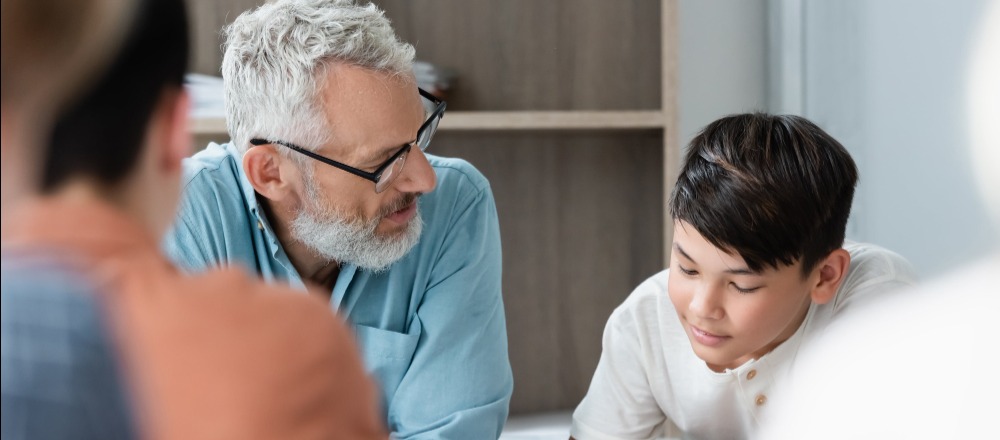Building Positive Teacher-Student Relationships

Building Positive Teacher-Student Relationships: Techniques for Creating Strong, Trust-Filled Connections
Creating positive teacher-student relationships is essential for fostering a supportive and effective learning environment. When students feel valued and understood, they are more likely to engage in their learning, participate actively, and develop a love for education. As educators, the connections we build with our students can significantly impact their academic performance, emotional well-being, and overall school experience.
In this blog, we will explore practical techniques for building strong, trust-filled connections with students, emphasising the importance of communication, empathy, and support.
1. Understanding the Importance of Teacher-Student Relationships
Strong teacher-student relationships can lead to numerous positive outcomes, including:
- Increased Student Engagement: Students are more likely to participate actively in class discussions and activities when they feel connected to their teacher.
- Improved Academic Performance: Research indicates that positive relationships contribute to higher academic achievement and a more profound interest in learning.
- Enhanced Emotional Well-Being: Trusting relationships provide students with a sense of security, allowing them to express their emotions and seek help when needed.
Tip: Reflect on your interactions with students and consider how they contribute to the overall classroom atmosphere.
2. Techniques for Building Trust
Here are effective techniques to establish trust with your students:
- Be Approachable: Create an open and welcoming classroom environment. Smile, greet students warmly, and show genuine interest in their lives to encourage them to engage with you.
- Active Listening: Practice active listening by giving students your full attention when they speak. Nod, make eye contact, and respond thoughtfully to demonstrate that you value their opinions.
- Consistency and Fairness: Be consistent in your expectations and rules, and treat all students fairly. This builds trust and helps students feel secure in their interactions with you.
Tip: Share personal anecdotes or experiences that relate to your students’ lives to create common ground and build rapport.
3. Effective Communication Strategies
Effective communication is key to fostering strong relationships. Consider the following strategies:
- Use Positive Language: Frame your language positively, focusing on what students can achieve rather than what they cannot. This encourages a growth mindset and motivates students to improve.
- Encourage Student Voice: Create opportunities for students to share their thoughts, ideas, and feedback. This not only empowers them but also shows that you value their contributions.
- Provide Constructive Feedback: When giving feedback, emphasise strengths while also highlighting areas for improvement. Make sure students understand that feedback is meant to support their growth.
Tip: Use a communication tool, such as a class blog or forum, to allow students to express their ideas and thoughts outside of regular classroom discussions.
4. Cultivating Empathy in the Classroom
Empathy plays a crucial role in building strong relationships. Here’s how you can cultivate empathy:
- Model Empathy: Demonstrate empathy in your interactions with students by acknowledging their feelings and validating their experiences. This teaches them the importance of understanding others.
- Teach Empathy Skills: Incorporate activities that encourage students to practise empathy, such as role-playing scenarios where they must consider different perspectives.
- Create a Safe Space: Foster an environment where students feel comfortable sharing their emotions and concerns. Ensure they know that their feelings are respected and understood.
Tip: Hold regular class discussions on emotional topics to encourage students to share their feelings and develop a sense of community.
5. Building a Supportive Learning Environment
Creating a supportive learning environment is essential for nurturing positive relationships:
- Encourage Collaboration: Incorporate group work and collaborative projects into your lessons. This not only helps students develop teamwork skills but also fosters connections among peers.
- Celebrate Achievements: Acknowledge both individual and collective successes, whether big or small. Celebrating achievements boosts morale and strengthens the bond between you and your students.
- Be Available: Make time for students to approach you with questions or concerns, both academically and personally. Being accessible helps reinforce the message that you care about their well-being.
Tip: Create a classroom bulletin board that highlights student accomplishments, fostering a sense of pride and belonging.
6. Encouraging Student Engagement
Engaged students are more likely to develop positive relationships with their teachers. To enhance engagement:
- Connect Learning to Real Life: Relate lessons to students’ lives and interests. This makes learning more relevant and enjoyable, encouraging students to engage with the content.
- Provide Choice: Give students options in their learning, such as project topics or presentation formats. This empowers them and increases their investment in their education.
Tip: Incorporate student interests into your lesson plans to make learning more exciting and relatable.
7. Professional Development and Reflection
To continually improve your ability to build relationships, consider the following:
- Seek Professional Development: Participate in workshops focused on social-emotional learning and effective communication strategies to enhance your skills.
- Reflect on Your Practice: Regularly assess your interactions with students. Consider what works well and what might need improvement, and be open to feedback from peers.
Tip: Create a journal to document your reflections on student interactions and strategies you implemented, noting what had the most significant impact.
Conclusion
Building positive teacher-student relationships is fundamental to creating a supportive and productive classroom environment. By employing effective communication, demonstrating empathy, and fostering engagement, educators can cultivate trust-filled connections that enhance students’ learning experiences and overall well-being.
What techniques have you found effective in building relationships with your students?





